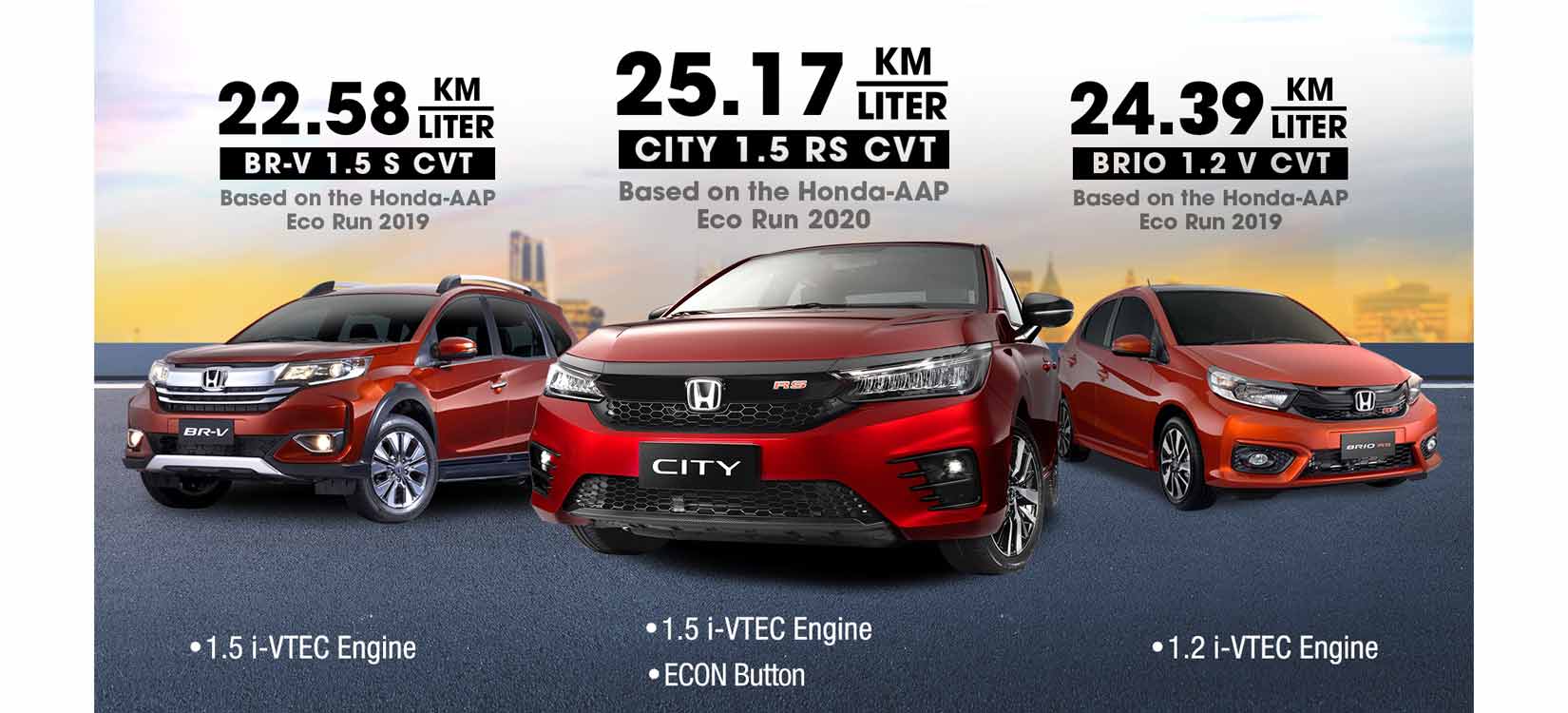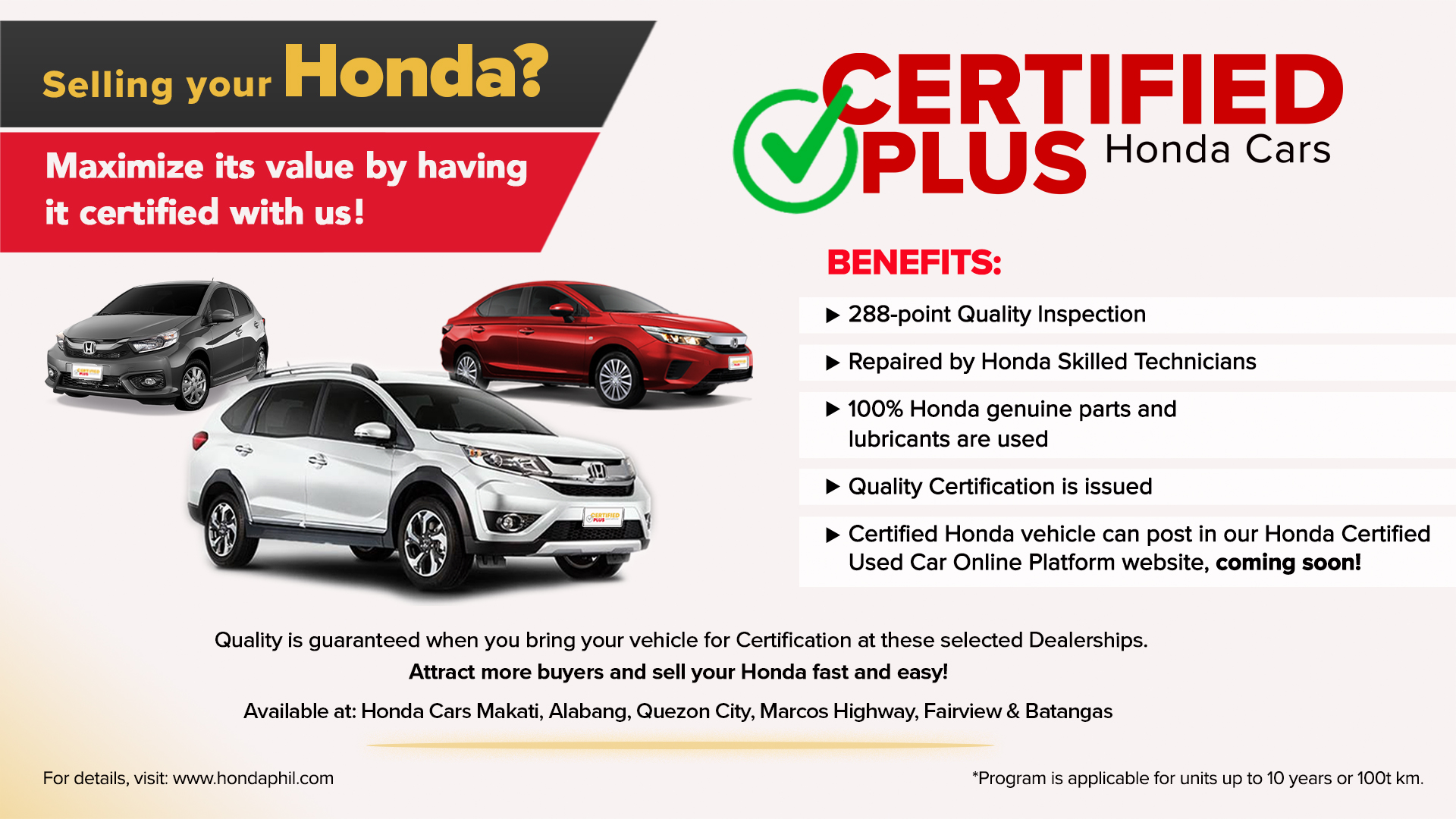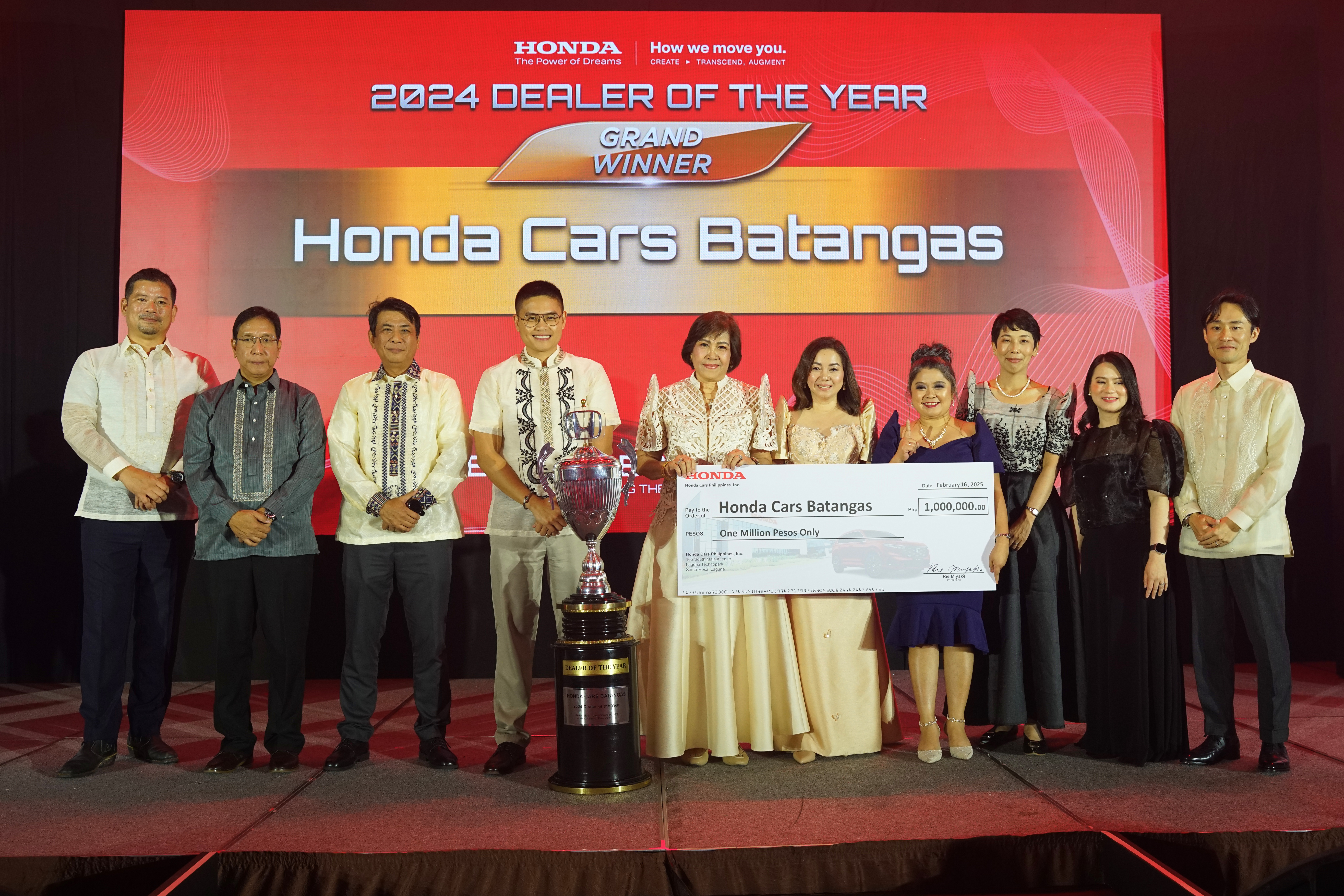Save gas and money with fuel-efficient Honda vehicles
Honda has expressed its environmental goal of carbon neutrality for all products and corporate activities by 2050. This encompasses the target for automobiles which is 100% electrification by 2040. On the way there, we will not relent on improving vehicle fuel efficiency, which is both practical and necessary in view of its impacts on health and global warming, and on consumption and spending.
In line with the global mission of preserving the environment, Honda Cars Philippines, Inc. has been offering a range of fuel-efficient models to choose from. Though it is worth noting that the fuel consumption would vary depending on how the owner uses and takes care of his/her vehicle. Lately, fuel prices in the Philippines have been skyrocketing, and this has indeed become a major frustration among motorists. That said, here are our top tips on how you can save on fuel and get the best out of your drive:
Follow the prescribed maintenance schedule for your vehicle. Keeping your car in shape will help ensure good performance in the long run. Without a good tune-up, a vehicle consumes more fuel and is more prone to breakdowns. Give attention to air filters, as well as suspension and chassis parts. Check your owner's manual or warranty booklet for the recommended maintenance schedule. Honda customers can visit the Virtual Showroom / After-Sales for a detailed guide on the preventive maintenance and parts replacement schedule, and cost estimate for all models. Further, Honda prescribes only two maintenance visits a year at authorized Honda dealers compared with the quarterly maintenance of other brands. Learn more about Honda’s periodic maintenance in this video, Truth About Honda PMS (Periodic Maintenance Service):
Get a fuel-efficient vehicle. This is definitely an important decision and so it will help to do research. Consider Honda, the technology behind the design and development of Honda vehicles speak of dynamic performance and reliability, combined with lower emissions because every drop of fuel is optimized. Honda is also among the first brands to equip its vehicles with a visual fuel-efficiency feedback mechanism, the Eco-assist system and Econ button, to promote fuel-efficient driving as a fun and rewarding experience.
Honda continues to improve its vehicles’ fuel economy in different driving conditions, whether in city trips with frequent stopping and starting, or in highway driving. Here are examples of fuel mileage derived from fuel economy runs organized by Honda Cars Philippines in partnership with the Automobile Association of the Philippines (AAP):
- Honda BR-V – with its 1.5 i-VTEC engine that produces 120ps, the BR-V attained a fuel economy of 22.58 km/L. This puts the affordable subcompact 7-seater SUV at the top of its class in horsepower rating with notable fuel efficiency.
- Honda City - equipped with 1.5-liter DOHC i-VTEC engine, the City achieved a fuel mileage of 25.17 km/L. The variable valve timing and electronic lift control technology optimize engine response giving it power and fuel efficiency at the same time.
- Honda Brio - powered by a 1.2-liter SOHC i-VTEC engine with CVT, the Brio showed an economy rating of 24.39 km/L. The subcompact hatchback exhibits power that also delivers great gas mileage and ample space, and breaks the norms of typical small cars.
The fuel economy runs were conducted with the AAP’s supervision, parameters include cruising speed of 60-80 kph at 1500-2000 rpm, and aircon setting of 24°C and blower fan speed of 1.
Plan and combine trips. When safe, car-pooling is quite the option to reduce trips and fuel consumption. Plan your drive, avoid getting caught in rush-hour traffic, or use navigation apps to know the best route for your destination and escape congested areas.
Drive smoothly, not aggressively. Smooth driving is safer for everyone on the road. On the other hand, sudden acceleration and hard braking both increase fuel consumption and emissions. Aggressive driving (speeding and rapid acceleration/braking), aside from being unsafe, may lower gas mileage by 15%–30% at highway speeds and 10%–40% in stop-and-go traffic.
Minimize idling. You make the most of your fuel when you are in motion. On the other hand, staying idle for long means you're burning fuel without going anywhere. Therefore, avoid idling, avoid traffic as much as you can, and drive your vehicle to warm it up.
Get rid of all extra weight. Remember, the more weight a car needs to pull, the more effort the engine needs, and the more fuel it consumes. It is estimated that for every additional load of 100 pounds, your car’s fuel mileage decreases by 2%, and more when you’re driving up inclines. Remove unnecessary stuff you might be carrying in your car.
Keep your tires properly inflated. Underinflated tires mean more rolling resistance and more work for your engine. Studies show a 1% decrease in tire pressure can lead to a 0.3% reduction in fuel economy and a shorter lifespan for your tires. And so, a good quality tire pressure gauge can come handy. Check your tires every two weeks to make sure you are within the recommended tire pressure for your vehicle’s load.
Head on now to Honda Cars Philippines, Inc.’s VIRTUAL SHOWROOM page or visit the nearest Honda Cars dealership to know more about the Honda Periodic Maintenance Service and for more tips on fuel-efficient and safe driving; plus, know more about the latest Honda models and the Honda SENSING, Honda’s driver assistance and collision avoidance technology.



